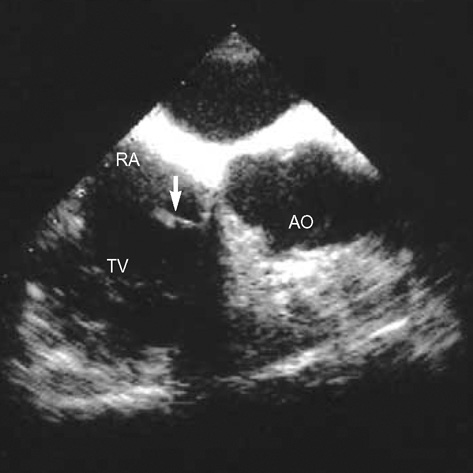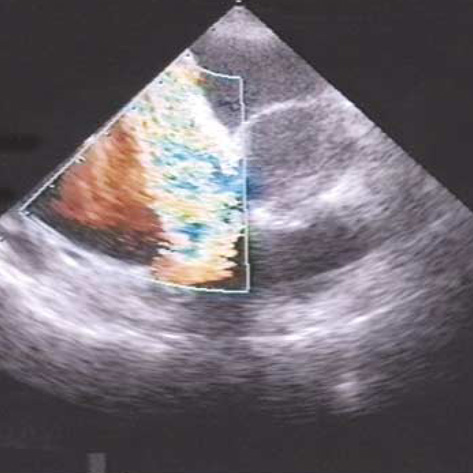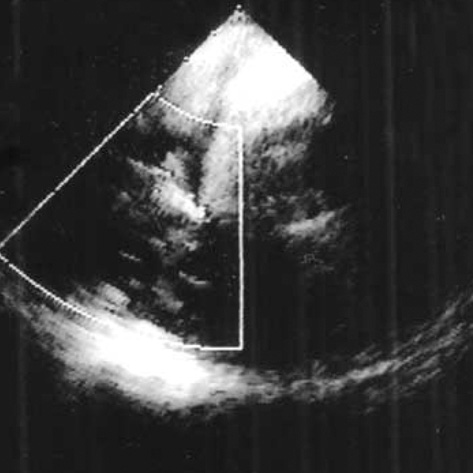J Korean Med Sci.
2007 Aug;22(4):731-734. 10.3346/jkms.2007.22.4.731.
Traumatic Tricuspid Regurgitation Following Cardiac Massage
- Affiliations
-
- 1Department of Anesthesiology and Pain Medicine, Yonsei University College of Medicine, Seoul, Korea. ylkwak@yumc.yonsei.ac.kr
- 2Department of Anesthesiology and Pain Research Institute, Yonsei University College of Medicine, Seoul, Korea.
- 3Department of Anesthesiology and Pain Medicine, Kwandong University College of Medicine, Goyang, Korea.
- KMID: 1127096
- DOI: http://doi.org/10.3346/jkms.2007.22.4.731
Abstract
- We report a 66-yr-old male patient who developed tricuspid regurgitation secondary to internal cardiac massage. After uneventful off-pump coronary artery bypass surgery, the subject experienced cardiac arrest in the intensive care unit. External cardiac massage was initiated and internal cardiac massage was performed eventually. A transesophageal echocardiography revealed avulsion of the anterior papillary muscle and chordae to the anterior leaflet after successful cardiopulmonary resuscitation. Emergency repair of the papillary muscle was performed under cardiopulmonary bypass.
Keyword
MeSH Terms
Figure
Reference
-
1. Dounis G, Matsakas E, Poularas J, Papakonstantinou K, Kalogeromitros A, Karabinis A. Traumatic tricuspid insufficiency: a case report with a review of the literature. Eur J Emerg Med. 2002. 9:258–261.
Article2. van Son JA, Danielson GK, Schaff HV, Miller FA Jr. Traumatic tricuspid valve insufficiency. Experience in thirteen patients. J Thorac Cardiovasc Surg. 1994. 108:893–898.3. RuDusky BM, Cimochowski G. Traumatic tricuspid insufficiency-a case report. Angiology. 2002. 53:229–233.4. Simmers TA, Meijburg HW, de la Riviere AB. Traumatic papillary muscle rupture. Ann Thorac Surg. 2001. 72:257–259.
Article5. Knobloch K, Rossner D, Struber M, Fischer S, Leyh RG, Haverich A. Traumatic tricuspid insufficiency after horse kick. J Trauma. 2004. 56:694–696.
Article6. Gerry JL Jr, Bulkley BH, Hutchins GM. Rupture of the papillary muscle of the tricuspid valve. A complication of cardiopulmonary resuscitation and a rare cause of tricuspid insufficiency. Am J Cardiol. 1977. 40:825–828.7. Oda H, Tanaka T, Yamazaki Y, Ito E, Miida T, Higuma N. A case of nonpenetrating traumatic aortic regurgitation detected by transesophageal echocardiography. Tohoku J Exp Med. 1997. 182:93–101.
Article8. Parmley LF, Manion WC, Mattingly TW. Nonpenetrating traumatic injury of the heart. Circulation. 1958. 18:371–396.
Article9. Osborn JR, Jones RC, Jahnke EJ Jr. Traumatic tricuspid insufficiency: Hemodynamic data and surgical Treatment. Circulation. 1964. 30:217–222.10. Jahnke EJ Jr, Nelson WP, Aaby GV, FitzGibbon GM. Tricuspid insufficiency. The result of nonpenetrating cardiac trauma. Arch Surg. 1967. 95:880–886.11. Perlroth MG, Hazan E, Lecompte Y, Gougne G. Chronic tricuspid regurgitation and bifascicular block due to blunt chest trauma. Am J Med Sci. 1986. 291:119–125.12. Sakuragawa H, Koyama N, Watanabe Y, Yoshihara K, Kawamura K, Yamazaki S. A successful valve repair case of isolated tricuspid regurgitation due to traumatic lacerated papillary muscle of the tricuspid valve. Jpn J Thorac Cardiovasc Surg. 1998. 46:91–95.
Article13. Benson DM, O'Neil B, Kakish E, Erpelding J, Alousi S, Mason R, Piper D, Rafols J. Open-chest CPR improves survival and neurologic outcome following cardiac arrest. Resuscitation. 2005. 64:209–217.
Article
- Full Text Links
- Actions
-
Cited
- CITED
-
- Close
- Share
- Similar articles
-
- Traumatic Tricuspid Regurgitation as a Cause of Failure to Wean from Mechanical Ventilation
- Traumatic Tricuspid Regurgitation and Acute Hearth Failure after Blunt Chest Trauma: 1 Case
- Comparison of Cine Magnetic Resonance Imaging with Doppler Echocardiography for the Quantative Evaluation of Tricuspid Regurgitation in Newborn
- Tricuspid Valve Repair for Tricuspid Valve Insufficiency Following a Cardiac Stab Injury
- Repair of Posttraumatic Tricuspid Regurgitation Using Artificial Chordae and an Annuloplasty Ring




